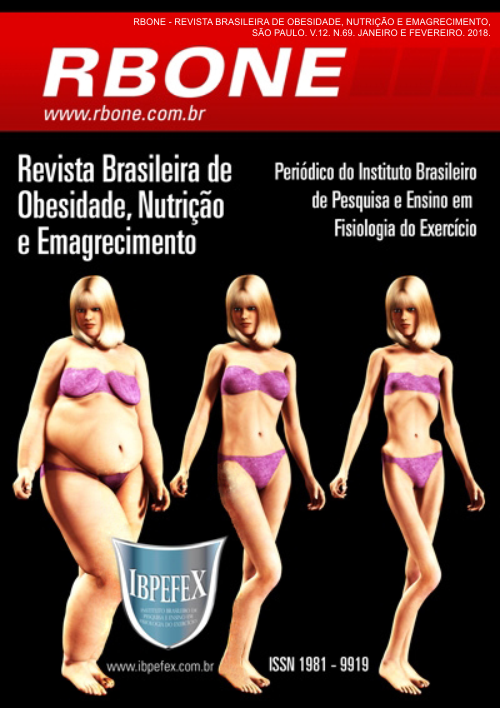Waste levels of non conventional parts of products used daily in a restaurant in the southwest of Paraná
Abstract
Restaurants to prepare and serve their daily buffet produce large amounts of waste food, that can be used in many ways. With the full utilization of food there are ways to reverse the situation that the country is facing, people starving and tonnes of food being thrown in the garbage. This work aims to show that there are ways to use the food in its totality, by decreasing the impacts that it causes in the environment and and turning it into nutritious food. For that, a research was carried out in a commercial restaurant in the southwestern state of Paraná, in order to monitor the quantity of barks, weeds, stalks and seeds that are discarded for lack of information or training who will manipulate them. For demonstration of complete use, two preparations were developed using food peels that would be discarded, banana peel cake and pineapple peel cake. In order to verify their acceptability, some tasting and evaluation were conducted from the Nutrition and Gastronomy academics of a private College in the southwest of Paraná, where in the evaluative paper, they should indicate if they liked or disliked the cakes and the possible development of the recipe in their daily routine. Both cakes had good acceptance, but with some points of improvement.
References
-Branco, J. Nós temos banana. Jornal Giro. p. 6. 2007.
-Cardoso, F.T.; e colaboradores. Aproveitamento Integral de Alimentos e o seu Impacto na Saúde. Sustentabilidade em Debate. Vol. 6. Num. 3. p. 131-143. 2015.
-Dias, M. C. Comida jogada fora. Correio Braziliense, 31 ago. 2003. Disponível em:<http://www.diaadiaeducacao.pr.gov.br/portals/roteiropedagogico/publicacao/4904_Comida_jogada_> Acesso em: 01/06/2017.
-Dutcosky, S. D. Análise sensorial de alimentos. PUCPRESS. Curitiba. 2013.
-Fernandes, A. F. Utilização da farinha da casca de batata inglesa na elaboração de pão integral. Dissertação de Mestrado em Ciências dos Alimentos. Universidade Federal de Lavras. Lavras. 2006.
-Gondim, J.A. M.; e colaboradores. Composição centesimal e de minerais em cascas de frutas. Ciência e Tecnologia de Alimentos. Vol. 25. Num. 4. 2005.
-Martins, J. G. P. Avaliação sensorial de bolo com resíduo de casca de abacaxi para suplementação do teor de fibras -Revista Brasileira de Produtos Agroindustriais. Vol. 14. Num. 3. p. 282. 2012.
-Passos, B. Nutrição e Qualidade de Vida, Aproveitamento Integral dos Alimentos, Disponível em: <https://nutricionistasjc.wordpress.com/2012/04/16/aproveitamento-integral-dos-alimentos-2/> Acesso em: 07/05/2017.
-Pereira, G.I.S.; Pereira, R.G.F.A; Barcelos, M. F.P; Morais, A.R. Avaliação química da folha da cenoura visando ao seu aproveitamento na alimentação humana. Ciências agrotécnicas. Vol. 27. Num. 4. p. 852-857. 2003.
-Rogério, M.C.P.; Borges, I.; Neiva, J.N.M.; Pimentel, J.C.M.; Carvalho, F.C.; Ponte, T.R.; Costa, J.B.; Catunda, A.G.V. Valor nutritivo do subproduto da indústria processadora de Abacaxi em dietas para ovinos. Consumo de Nutrientes. 141ª Reunião Anual da Sociedade Brasileira de Zootecnia. 2004.
-Santana, A. F.; Oliveira, L. F. Aproveitamento da casca de melancia na produção artesanal de doces alternativos. Alimentos e Nutrição. Vol. 16. Num. 4. p. 363-368. 2005.
Authors who publish in this journal agree to the following terms:
- Authors retain the copyright and grant the journal the right of first publication, with work simultaneously licensed under the Creative Commons Attribution License BY-NC which allows the sharing of the work with acknowledgment of the authorship of the work and initial publication in this journal.
- Authors are authorized to enter into additional contracts separately for non-exclusive distribution of the version of the work published in this journal (eg, publishing in institutional repository or book chapter), with acknowledgment of authorship and initial publication in this journal.
- Authors are allowed and encouraged to post and distribute their work online (eg, in institutional repositories or on their personal page) at any point before or during the editorial process, as this can bring about productive change as well as increase impact and impact. citation of published work (See The Effect of Free Access).






